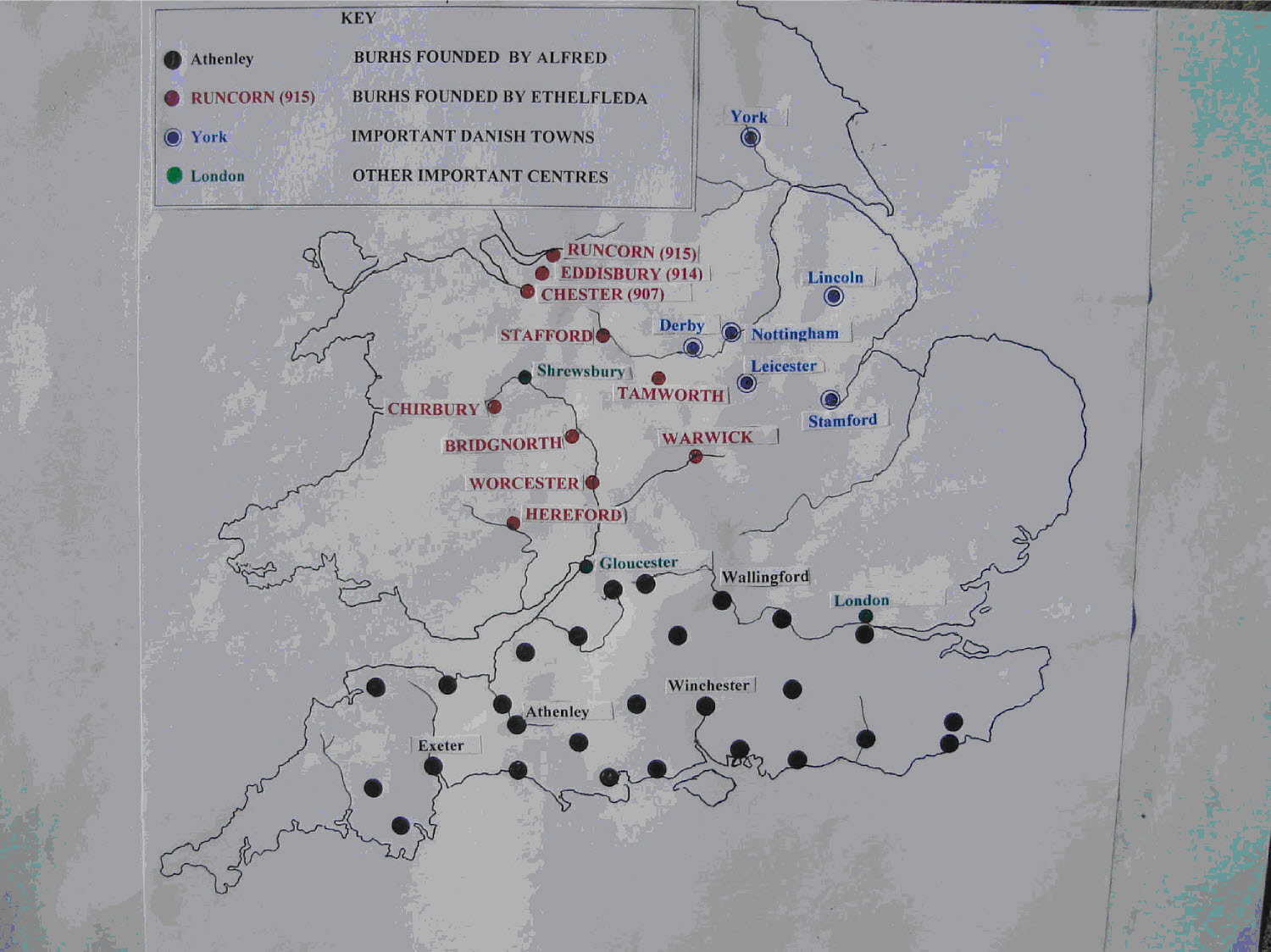Alfred's Burhs

This network of burhs with strong points on the main river routes was such that no part of Wessex was more than 20 miles from the refuge of one of these settlements. The typical Alfredian burh might have been a small to medium sized fortified town, some with Roman walls intact as at Exeter, some with a reconstituted Roman circuit as at Winchester, and some with entirely fresh Saxon ramparts such as Wallingford. Typical defences were turf covered earth ramparts, revetted with timber and in some cases showing evidence of pallisading. In many cases these defences were later strengthened by stone walls. Alfred was not just concerned with defence. The Vikings' destruction of monasteries had led to the deterioration in learning and religion. Instructions and legislation could only be read by a few people. He brought in scholars from Mercia and Wales and learnt Latin in his late thirties. In a preface to one of his books, Alfred wrote 'so general was Latin's decay in England that there were very few on this side of the Humber who could understand their rituals in English or translate a letter from Latin into English ... so few that I cannot remember a single one south of the Thames when I came to the throne.' To improve literacy, Alfred arranged and helped scholars to translate a handful of books covering history, philosophy and religion from Latin into English. These were copied and circulated. He also established a legal code based on the laws of King Offa of Mercia and earlier kings of Wessex and Kent. Æthelflæd had a key role in regaining Mercian territory